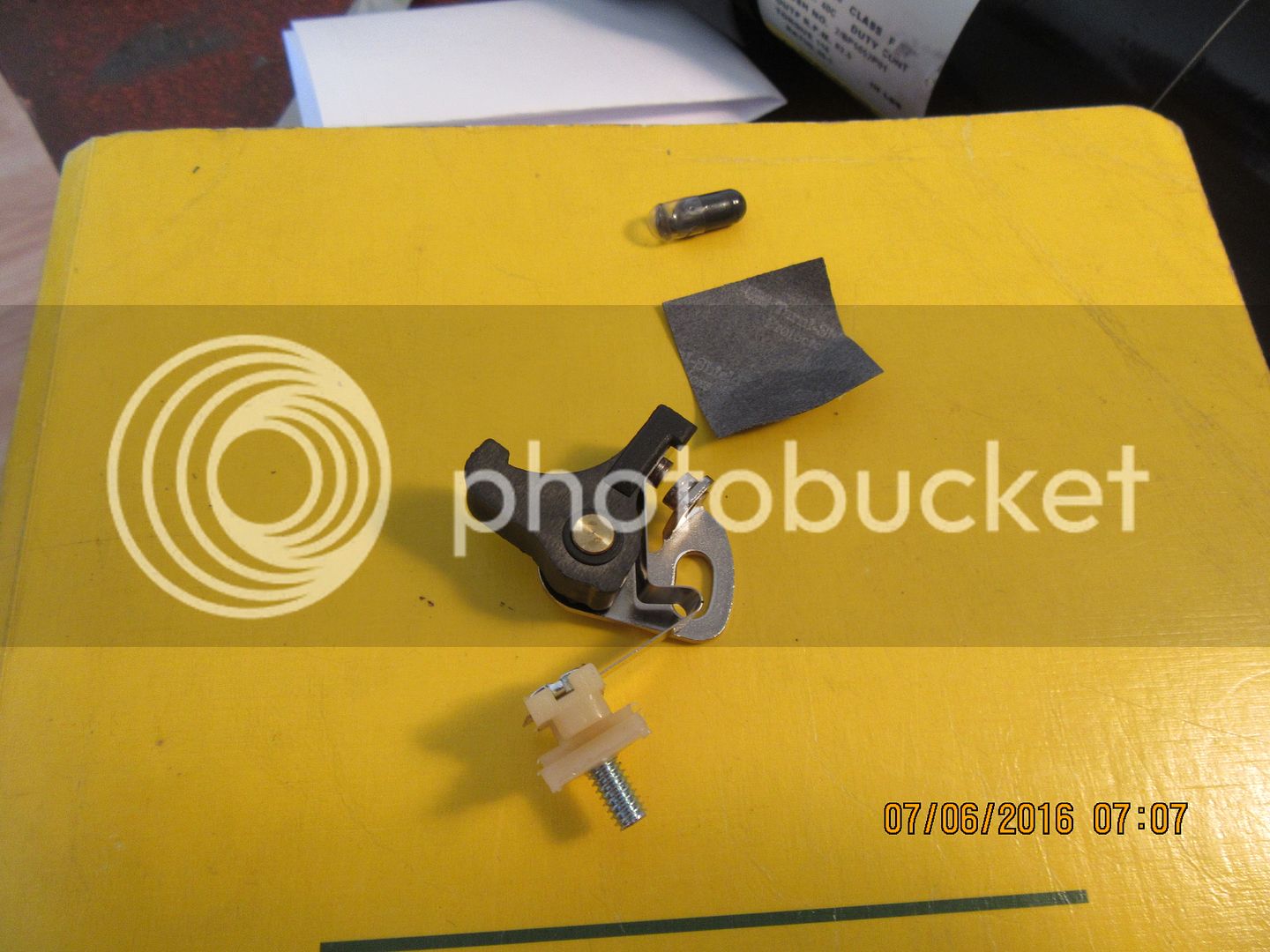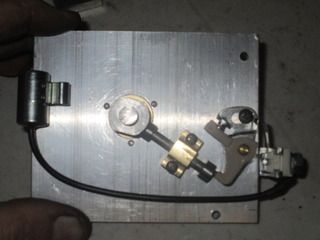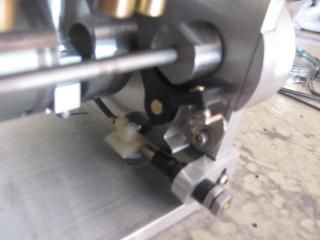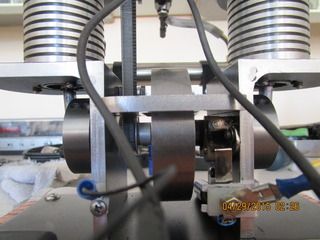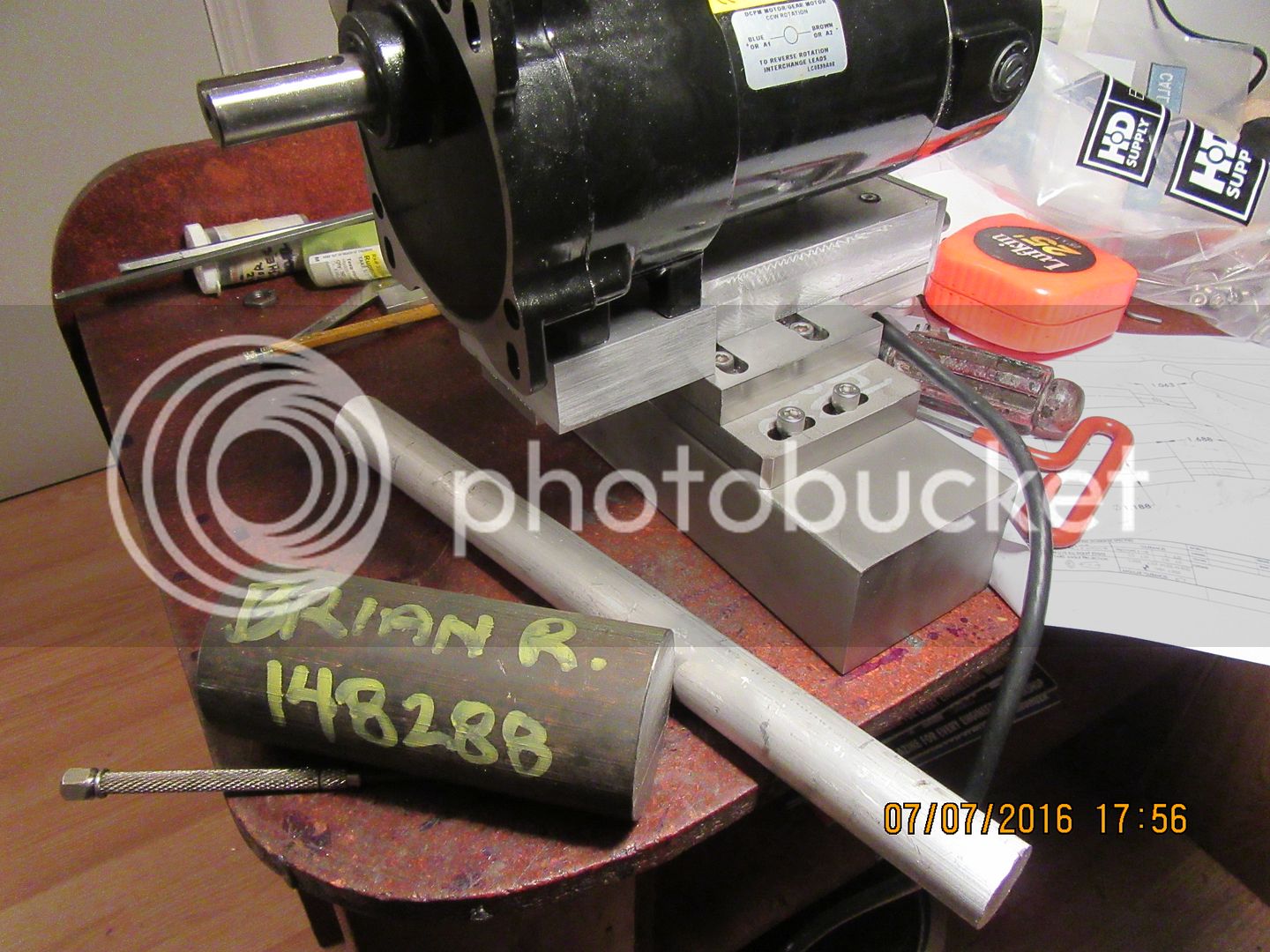I have been asked about how I fit the piston to the cylinder. I haven't really got into piston/cylinder fits yet, but this is how I do it--the cylinder is finish reamed (or bored, I have a 1" reamer) to 1.000" diameter. After initial machining, a brake cylinder 3 stone hone powered by a variable speed drill is ran through it back and forth thru the bore dry at about 150 rpm, and only for about a dozen times to knock off any high spots. Do NOT let the hone spring out either end of the cylinder while you are doing this. A piece of 1" diameter aluminum about 6" long is 'polished' with 220 grit carborundum paper until it just fits into the end of the cylinder. (this will mean that the 1" aluminum will be at about 0.998" diameter.) The very end of the aluminum is chucked in the lathe, and coated with a slurry of 600 grit carborundum paste and oil, and with the lathe NOT RUNNING the cylinder is held in your hand and slowly pushed and rotated onto the aluminum until it will fit right over the aluminum and have about 1" to 1 1/2" of the aluminum sticking out the other end of it. This is a slow procedure and not a lot of force should be used. It will feel tight and gritty at first--it is supposed to--You are polishing the bore to take it to a very smooth finish. Once the cylinder can be moved from one end of the aluminum to the other without "grabbing", remove it from the round aluminum completely and start the lathe at a low 50 to 60 rpm. Add a little more slurry to the aluminum surface. Very carefully slide the cylinder over the revolving aluminum and slide it back and forth about 20 times, making sure to not slide it so far that the aluminum disappears into the bore. Be ready, if it grabs, to let go very quickly and shut down the lathe, then work it off by hand. This is very dangerous and scary as Hell, but it's the way to do it. Turn the piston outer diameter down in very small increments until it just starts into the cylinder bore but doesn't slide in. I have made up a handle somewhat like a long connecting rod with a T handle on the end of it. I put the handle on the piston with a short piece of material to act as a wrist-pin, put the cylinder into the lathe 3 jaw, and coat the bore with a bit more slurry. Using the T handle, with the lathe OFF, work the piston back and forth thru the bore until it moves freely. Once this is done, wash the inside of the cylinder and the outside of the piston with soap and water and scrub with a toothbrush and wipe with laquer thinners, to be sure to remove any remaining carborundum paste. Now--You are set up to use a Viton o-ring for your piston ring. The procedure is the same for the piston regardless of whether it is cast iron or aluminum. This will be a relatively slow revving engine, so we are not worried about the mass of the piston, and as I said in an earlier post, cast iron has it's own inherent lubricating properties because of the graphite which is part of its metallurgical make up.---Also---the crankshaft web has a pretty massive counterweight built into it, so I like the mass of an iron piston to avoid over-counterbalancing the engine, as might happen with a light aluminum piston.------------Lubrication--Well, the crankshaft runs in sealed ball bearings, so needs no lubrication. Both ends of the con-rod are going to be running sintered bronze Oilite bushings, so a squirt from an oilcan before running will be quite good enough. The camshaft doesn't rotate. It is stationary, and the exhaust cam is bolted to the face of the cam gear, which rotates on an Oilite bushing. And--I always run about a 50:1 mix of synthetic 2 cycle oil with my fuel to lubricate the Viton ring and the piston/cylinder interface.





